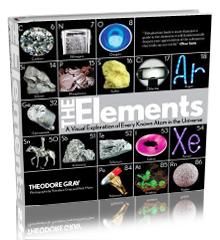Student sample. | |||
| Sample Image | Spin Video | QuickTimeVR Rotation | |||
| Student sample. This bead of lead was created by two students, Katie Davidson, 11, and Elliott Smith, 14, at the Bishop Bell school in East Sussex. They heated yellow lead (II) oxide with powdered carbon in a test tube, resulting in the reduction of the oxide to the base metal, which was poured out while the tube was still hot. The purity has not been measured, but as you can see in the photograph there are small crystals in the center. Crystals do not form in lead unless it is reasonably pure. Reduction of oxides to their underlying metal is the most common way in which metals are extracted from ores. For example iron ore is iron oxide, and it too is reduced by heating with carbon (coke). Reducing iron is difficult: It's quite remarkable that it was achieved so early in the history of civilization (shortly before the iron age, as you might have guessed). Reduction of lead oxide is somewhat easier because the temperature required is not as high, and the resulting metal has a low melting point so it flows out easily. But the principle is the same, and in creating this lead the students have reenacted the age old miracle of creating a shiny metal where before there was only a dusty powder. How magical that must have seemed when it first happened many thousands of years ago, perhaps under a campfire built by accident on a suitable deposit of ore. Who first noticed the phenomenon and realized that it was something worth looking into? I bet it was a young person. I thank Jason Stainer, science instructor at the school, for sending this sample, which is an excellent example of what students can do in science if they are given half a chance. Source: Jason Stainer Contributor: Jason Stainer Acquired: 10 December, 2005 Price: Donated Size: 0.25" Purity: >98% | |||
|

